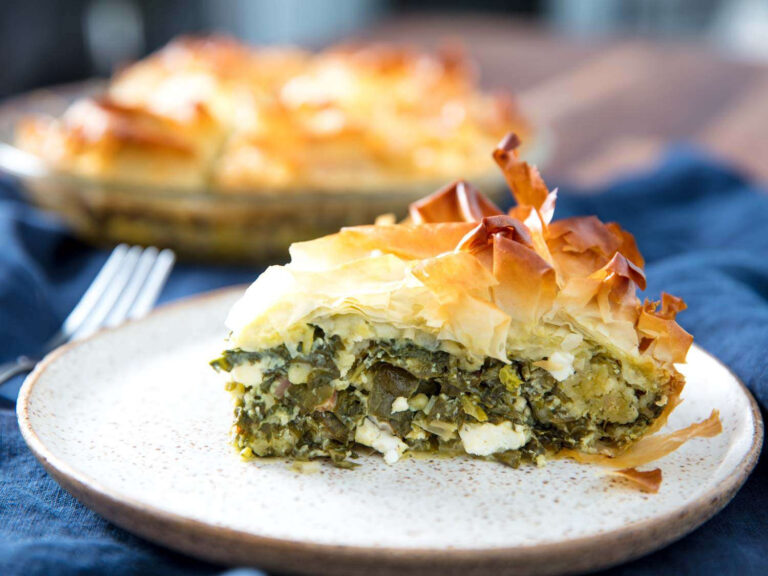Today’s recipe for garum sauce takes us back many centuries into the past to one of the most appreciated and widely used culinary preparations of the ancients. This is the ninth in Giorgio Pintzas Monzani’s series about the foods of ancient Greece and how they have spread to cuisines around the world. The Greek-Italian chef is also a writer and consultant.
By Giorgio Pintzas Monzani
With a particularly strong, complex taste, the ancient Greek and Roman garum sauce (“garon” in Greek) is the result of an ancient fermentation process involving whole fish alternately layered with salt.
Many people today believe garum’s original recipe is full of historical uncertainties, connected to the contradictions about its consistency. There are those who hypothesize it had a form like fish paste, dense and creamy, whereas others say it was a sort of “colatura” with much more liquid.
However, the reality is much simpler. From the same processing, two products with different consistencies were obtained, namely a liquid part, called “liquamen,” and a denser mixture without liquids, called “allec.”
Ancient Greek sauce garum used to flavor a wide range of foods. The sauce, which has Babylonian origins, arrived on the coasts of Mediterranean lands thanks to the voyages of the Phoenicians. It was later named “γαρον” (garon) by the Greeks because of the fish, garon—known today as anchovies—used in its preparation.
The fish sauce quickly became one of the main seasonings used not only in the royal banquets of the Greek poleis but also on the daily tables of the rest of the population. The great gastronomical range of Greek cuisine led to its use in many preparations—even in dishes in which fish was not the protagonist—for example in seasoning mushrooms and cereal-based dishes.
Greeks surely made it a progenitor of their cuisine, but there was not a great deal of experimentation with it when they prepared it. Later, the gastronomical innovations of the Roman Empire brought the Greek product to a high culinary importance and made it the most used condiment in ancient times.
The name became “garum” in Roman lands, taking the root of the Greek term, and transforming it into the Latin alphabet. Moreover, in the Roman period were born certain variants of the same condiment, catalogued according to the additions made during its preparation:
- Oxygarum, with the addition of vinegar
- Hydrogarum, with aromatic herbs
- Aimation, obtained by using the blood and entrails of tuna only
- Oenogarum, by mixing it with red wine
- Eleogarum, with added olive oil
The Roman writer Quintus Gargilius Martial provides a fairly accurate description on the preparation and choice of ingredients for garum:
Fatty fish such as sardines and mackerel should be used, to which various fish entrails should be added, in a portion of 1/3. It is necessary to have at one’s disposal a large basin, having a capacity of (about one gallon), on which is spread a layer of salt two fingers high.
Repeat the layers up to the brim of the container. Leave to rest in the sun for seven days. For another twenty days, stir the mixture frequently. At the end, a rather thick liquid is obtained which is precisely the garum. It will keep for a long time. Assuredly, garum is not a low-sodium product; however, using so much salt is necessary to prevent the fish from spoiling as it ferments.
The Recipe For Garum:
3 kg of fresh, small fish (such as anchovies, mackerel, sardines) 500 grams (2 cups plus one tablespoon) of untreated sea salt
500 grams (2 cups plus one tablespoon) of coarse salt
2 bay leaves
There is a great deal of freedom in the choice of fish given the variety already used in ancient times. The important thing is that it be fresh and not frozen and, above all, whole and not cleaned of its entrails. For the salt, we use both fine and coarse salt. The finely-grained salt allows it to penetrate inside each fish. The coarse salt facilitates the separation of the salt from the final liquid product, making it less salty and intrusive.
Rinse the fish under running water, then cut into smaller pieces. In an airtight jar, layer the fish with the salt, making sure that each part of the fish is covered with it. After the second layer, place the bay leaves in the container. Then, hermetically seal the jar as tightly as possible and simply leave it at room temperature. Every three days, with the help of a wooden spoon, stir the mixture to facilitate fermentation.
After thirty-five to forty days, filter the mixture through a double fine mesh strainer. In case we have an etamine cloth, use it in addition to a single kitchen strainer. The solid part that remains in the strainer, called allec, is considered difficult to use in today’s cuisine as a whole, but in case you want to experiment, simply place it in another glass jar and use it within two months. The liquid garum must be kept in a covered glass jar in the fridge; use it within a maximum of two to three months.
Source: Greek Reporter







